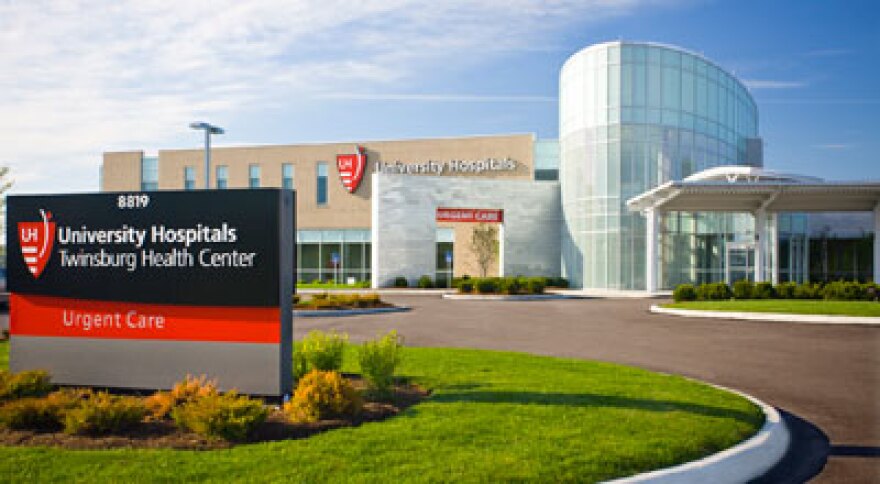Healthcare is more than just taking care of people’s health. With a $15 billion footprint in northeast Ohio, it is a key part of the regional economy. In this opening installment of our seven-part series, “The Business of Health,” WKSU’s Tim Rudell takes a look at this growing and evolving industry.



It seems like anywhere you go in northeast Ohio, there's an outpost of the Cleveland Clinic or University Hospital, and sometimes both -- or Summa or another big healthcare system. The major regional players keep expanding, acquiring smaller hospitals and merging.
Health industry consultant Janet Porter -- whose client list includes the Cleveland Clinic — says this trend

toward “big box” medicine can improve care and affordability through efficiency, and will continue.
A thousand hospitals closing
“The projection is that over a thousand hospitals will close in the United States in the next three years, And we’re going to continue to see consolidation in insurance; we’re seeing that dramatically right now. And we’re probably, like other industries, going to end up with three or four major providers."
Porter also says the consolidation we’re seeing in northeast Ohio will help drive economic growth here, where more than half of state’s bio-medical industry is located.
But In northeast Ohio, there is an aging population that relies on healthcare and is accustomed to some of the best medical centers and care in the nation. Economic benefits from the success of the business may not be as compelling as continuing the kind of care people here are used to.
Beware monopolies
That's something Robert Morris University health economics professor Stephen Foreman

says may be at risk in what he calls a “big box” business environment.
“It's monopoly power bargaining. If Walmart comes in and says, 'We want to buy everything you make for the next 10 years,’ you ought to ask the question, 'Five years from now, what are my options if Walmart turns on me?’
"And that’s where we are with these big healthcare organizations. If they turn on us and start monopoly pricing, what are we gonna do -- because they will.”
Consultant Porter says the industry has evolved past that. She sees consolidation making for better use of emerging tools to improve both care and efficiency, like data aggregation, and analytics.
"One of the things that’s very exciting with consolidation is you end up with a place like Cleveland Clinic, for example, where they’re responsible for a large enough population that they really have good information about what works.”
People not populations
But, there are doctors who say it’s people they care for not populations.
Liberty Family practices is on East Turkeyfoot Lake road in a semi-rural area of Green. Primary care physicians Sue Bailey and Ann Grantham are Liberty Family Practice.

They call medical data an invaluable help, but not a mechanism for treating ‘people.’ And Dr. Bailey sees a conflict of missions between making patient-focused decisions and business-focused decisions.
“Our responsibility is to the patient, but we’re paid by somebody else -- insurance companies responding to shareholders," sayd Grantham. “And, I think that’s where medicine is not a business, in the general sense. And, I think it is taking healthcare, especially from where we practice it, down the tubes.”
Proponents of big-box medicine argue that operating to attract investors -- shareholders -- by maximizing profitability and to attract customers through cost control, is critical to keeping healthcare ‘healthy’ financially. They also maintain that consolidation into an industry of fewer and bigger organizations will do that.
Economist Foreman disagrees.
“When you hear politicians talking about the free market fixing medicine ... they’re idiots. Because, in order to have a free market, you need to have many small buyers and sellers; that way nobody fixes price. You need to have homogenous products,so that people can compare. You need free entry and exit from the market. And, you need free information about quality and price. So, it’s not even close.”
Efficiency and innovation
But consultant Porter believes doubling down on efficiency and involving the recipients of care will continue to improve the industry that has historically accomplished great things.
“It’s going to allow people to monitor their health, and when intervention is necessary, to target it as specifically and efficiently as possible. And I think we’re going to have even more incredible breakthroughs over the next 50 years.”
What all of this means to northeast Ohio is not certain, but one thing is. For the time being, the big players in regional healthcare will be getting bigger.




